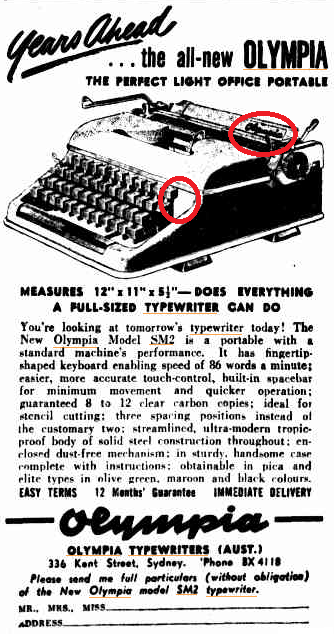Hotel Zed in Victoria, Canada. See Arthur Black's 2014 column below.
Black is black
I want my typewriter back
Grey is grey
Since she went away
- with apologies to Michelle Grainger, Tony Hayes, Steve Wadey
The Unreliable Memories
of Arthur Black
On June 10, 1989, this column by Canadian humorist Arthur Black appeared in The Chilliwack Progress in British Columbia:
Comparing a gorgeous Olympia typewriter to Golda Meir
And a 1980s Tandy "laptop" to an alluring young siren
Oh, Elizabeth blushed, all right, because in time Arthur even forgot his jilted Olympia's name.
Last September, 25 years after writing his column upon abandoning the typewriter, Arthur wrote this in the Algoma News (Ontario):
Everything New
is Old Again
The pimply-faced kid in the backwards-facing ball cap shows up to fix my
laptop, taps a couple of keys, shrugs and says “It’s dead. You probably need to
replace it.”
Yes. Of course. It’s almost six years old. A total fossil. This is
my fourth - or is it fifth? - personal computer. It’s the latest in a daisy
chain of technological bewilderment and woe that stretches all the way back to
an ancient clunky Commodore 64 which is the machine that first seduced me away
from my old Olivetti typewriter.
The one that never broke down, never crashed,
never lost a file and never once in thirty years required the ministrations of a
‘typewriter expert’. This despite gallons of spilled coffee on its keyboard,
breadcrumbs and cigar ashes in its innards, frequent manual abuse and once,
being hurled right off my desk into a wall (impending deadline; writer’s
block).
I never thought much about my old Olivetti when I had it but in
retrospect I mourn for it like a lost love. I miss its music; the ta-pocketa
peck of the keys striking the paper, the ka-ching of the bell that warned me I
was nearing the end of a line; the whirr and ka-boom of the carriage as I cuffed
it across to start a new line.
Oh hell. If you’re under 40 reading this I might
as well explain how to harpoon a whale. You have no idea what I’m talking
about.
Used to be you couldn’t find an office without at least one typewriter.
Now they’ve vanished into the landfill of history, along with Eaton’s
catalogues, fax machines, garter belts and buggy whips.
And public telephones.
Pay phones haven’t disappeared entirely, but as an urban feature that used to be
on every street corner they are now as scarce as flamingos. That’s not a
surprise given that just about everyone nowadays totes a plastic lozenge that
can make calls, take calls and tell you the current humidity reading in
Mogadishu.
Humans now carry more information in their breast pocket or purse than
our grandparents would access in a lifetime. The fact that a majority use it to
play Angry Birds or tweet a review of our latest purchase at Tim Horton’s? The
fault, Dear Brutus, is not in our stars.
Or in our BlackBerrys.
There is a brand
new hotel in the city of Victoria - or rather a brand-new ‘old’ hotel - called
Hotel Zed. Sixty-two rooms all retro-fitted to whisk the client right back to,
oh, say 1967. The colour scheme is sixties-psychedelic, there’s a ping pong
table in the lobby along with - yes - actual typewriters that guests can use.
Each room has a bulletin board instead of a guest directory, old fashioned alarm
clocks, radios you can actually see the dial on…
And telephones.
Real telephones. The clunky Bakelite ones with the curly
cords and the one-ringy-dingey, two-ringy-dingey rotary dial right in the middle.
You’ll find the rotary phone right by the bed in your room at the Hotel Zed.
And
if you’re a little mystified by the device, not to worry - there’s a How-to-Use
it guide in the drawer. Or you could just hold your iPhone up to the phone and
click. You’ll get an instruction video.
Not sure how to use a rotary phone? Hey,
there’s an app for that.
Arthur Black was born in Toronto on August 30, 1943. He has written 12 books of humour and is remembered across
Canada as the host of Basic Black, a national weekly radio show that delighted Canadians every Saturday morning for 19 years (1983-2004). He
also hosted and wrote two award-winning TV series, Weird Homes and Weird Wheels.
In addition, he writes a syndicated newspaper column that appears in more than
50 papers from Vancouver Island to Newfoundland. After stumbling through a succession of unsuccessful careers (dog
walker, underwear salesman, cattle prodder, door-to-door encyclopedia salesman, oil tanker deckhand, sheet metal apprentice and plumber's assistant, to name only a few), Black began
his broadcasting career. His radio show was a wacky potpourri of off-beat music,
comic sketches and interviews with the weirdest human beings Black could dig up
each week. Over the years Black chatted with eccentric scientists, serene cave
dwellers, transvestite bikers, nude sunbathers and skunk control officers (but no typewriter collectors ....?).
Black now lives on Salt
Spring Island, British Columbia.
.JPG)

















































